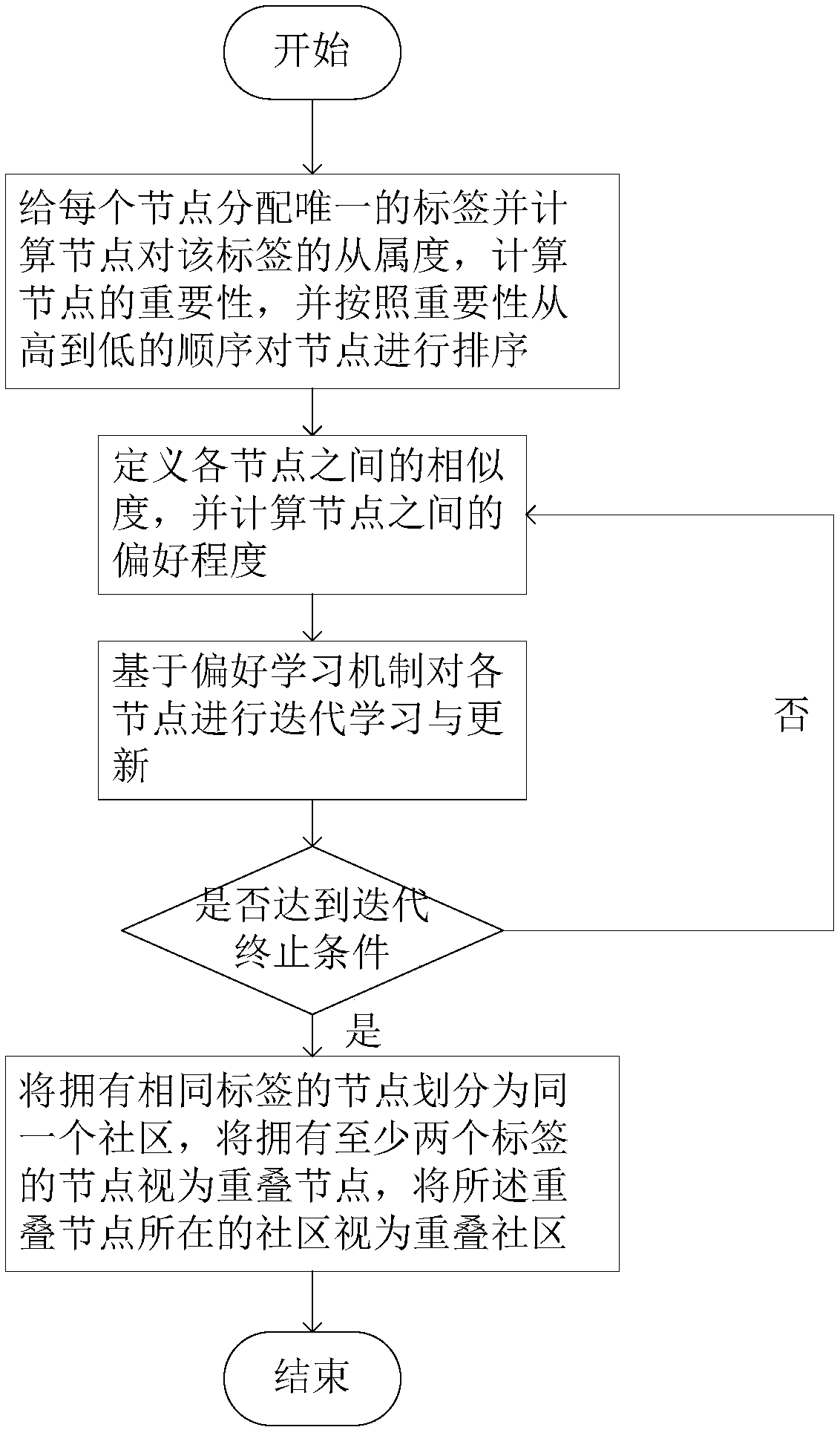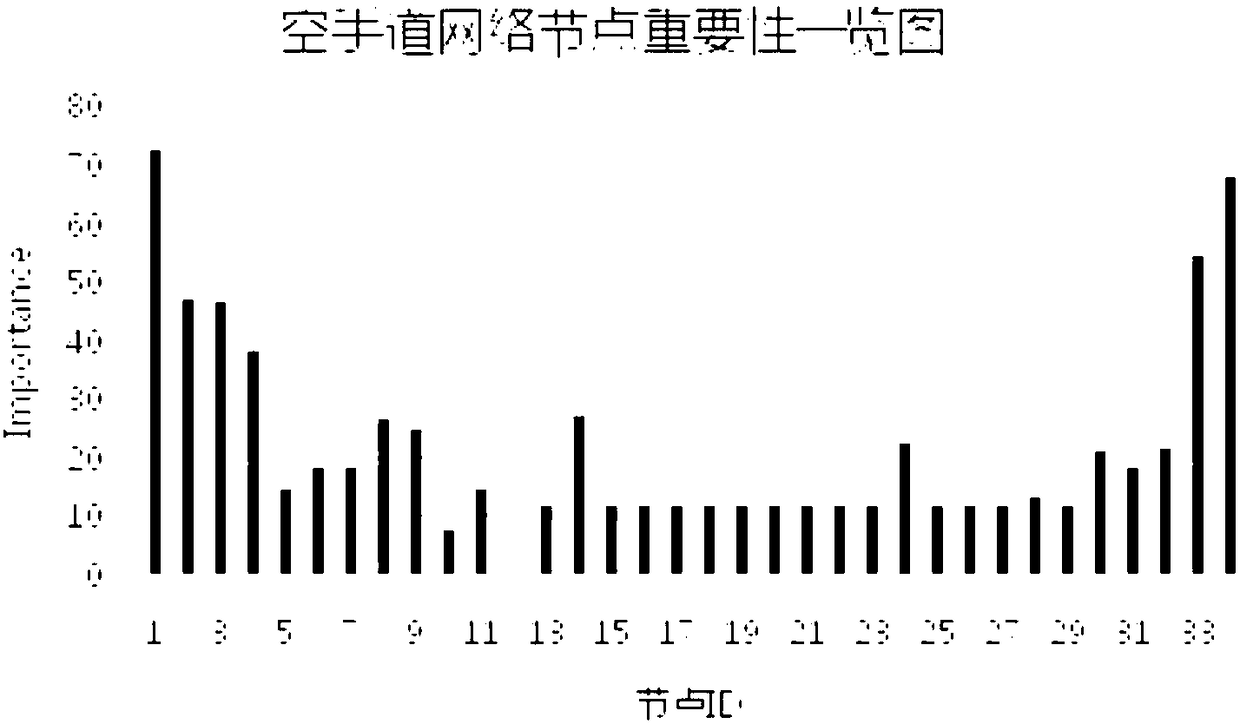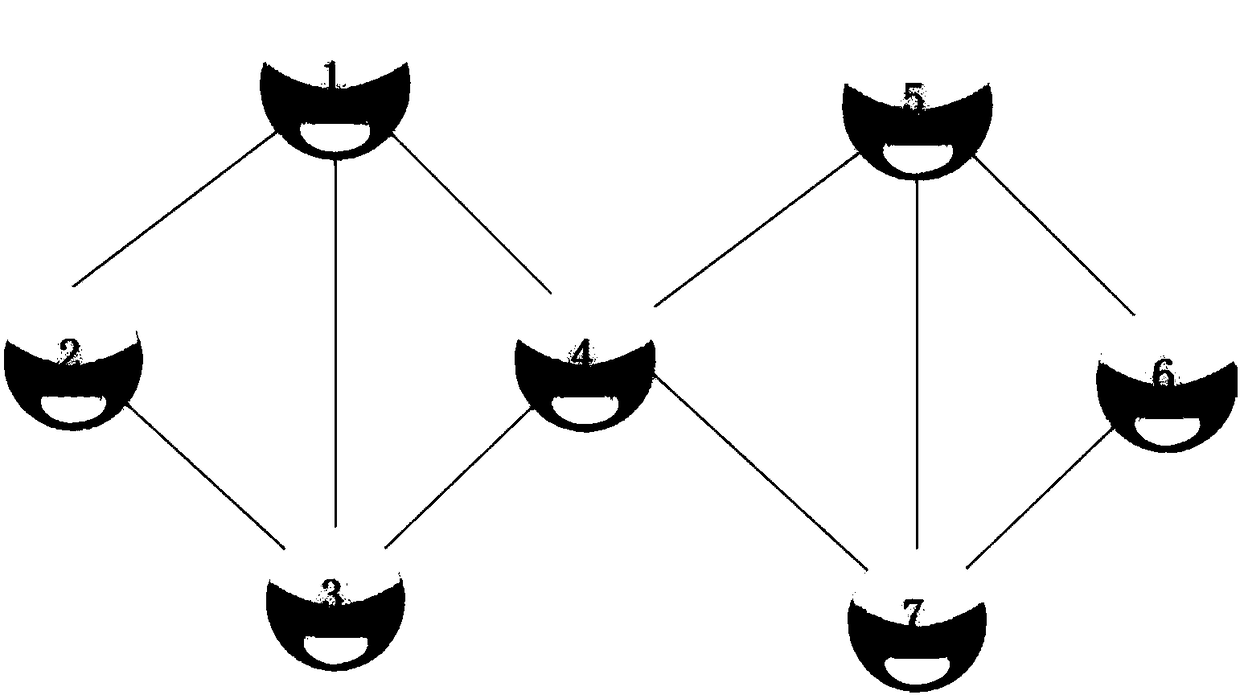Preference learning mechanism-based overlapping community discovery method and system
A technology of overlapping communities and learning mechanisms, applied in transmission systems, digital transmission systems, instruments, etc., can solve problems such as inaccuracy, algorithm instability analysis results, and different results, and achieve efficient convergence, rapid convergence, Applicable effect
- Summary
- Abstract
- Description
- Claims
- Application Information
AI Technical Summary
Problems solved by technology
Method used
Image
Examples
Embodiment 1
[0061] see figure 1 , this embodiment discloses a method for discovering overlapping communities based on a preference learning mechanism, including the following steps:
[0062] S1: Assign a unique label to each node, set the degree of membership of the node to the label, and then define the importance of the node according to the degree of the node and the local clustering coefficient, where the local clustering coefficient of the node is recorded as C( x), the calculation formula is:
[0063]
[0064] In the formula, N(x) represents the degree of node x, and n represents the number of edges that can be formed between nodes in the set formed by node x and its neighbor nodes;
[0065] The importance of the node is recorded as Importance(x), and the calculation formula is:
[0066] Importance(x)=|N(x)| 2 *C(x);
[0067] S2: According to the importance of the nodes, sort the nodes in order from high to low, define the label similarity, jaccard coefficient and connection ...
Embodiment 2
[0105] This embodiment takes the kite network as an example for analysis and description. First of all, it needs to be clear that the kite network is a small analog network commonly used in the field of complex network community division. The network has 7 nodes and 10 edges. The topology of the network Figure such as image 3 As shown, according to the node importance formula proposed by the present invention, the importance of all nodes in the topology diagram is calculated, and the importance of each node in the kite network is obtained as Figure 4 As shown, the order of each node in the kite network is 4, 1, 3, 5, 7, 2, 6 after sorting the importance of the nodes from high to low. In the initialization, the node ID is used as the initial community label, and the topology diagram after initialization is obtained as follows Figure 5 As shown, then, the nodes perform learning and normalization sequentially according to the above sequence to complete an iterative process, w...
Embodiment 3
[0108] In this embodiment, six real data sets commonly used in this field are selected to verify an overlapping community discovery method based on a preference learning mechanism (hereinafter referred to as PLPA) proposed by the present invention. In addition, four classic algorithms are selected for comparison. On the one hand, the widely used extended modularity index EQ is used as the evaluation index of this experiment. Among them, the experimental environment is: Intel i5-4590 3.2GHz CPU, 8G memory, PC with Windows8 operating system.
[0109] Specifically, the PLPA algorithm is verified by using six datasets commonly used in the field of overlapping community discovery. The parameters of the dataset are shown in Table 1 below:
[0110] Table 1 Real network dataset
[0111]
[0112] In addition, four classic algorithms are used for comparative experiments, more specifically, the four classic algorithms include CPM algorithm, Link algorithm, Copra algorithm and SLPA al...
PUM
 Login to View More
Login to View More Abstract
Description
Claims
Application Information
 Login to View More
Login to View More - R&D
- Intellectual Property
- Life Sciences
- Materials
- Tech Scout
- Unparalleled Data Quality
- Higher Quality Content
- 60% Fewer Hallucinations
Browse by: Latest US Patents, China's latest patents, Technical Efficacy Thesaurus, Application Domain, Technology Topic, Popular Technical Reports.
© 2025 PatSnap. All rights reserved.Legal|Privacy policy|Modern Slavery Act Transparency Statement|Sitemap|About US| Contact US: help@patsnap.com



